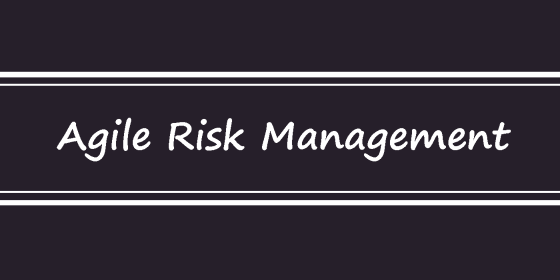Agile Risk Management

Agile Risk Management is the practice of identifying, assessing, and proactively addressing risks in an Agile project or development environment. It is a crucial aspect of Agile project management that helps teams and stakeholders understand potential challenges and uncertainties and take timely actions to mitigate or capitalize on risks.
Key points about Agile Risk Management include:
- Early Identification: Agile Risk Management involves identifying risks early in the project or iteration to minimize their potential impact on the project’s success.
- Collaborative Approach: Risk identification and assessment are collaborative efforts involving the entire Agile team, stakeholders, and subject matter experts. Diverse perspectives can help uncover a broader range of risks.
- Continuous Risk Assessment: Agile Risk Management is continuous throughout the project’s lifecycle. Risks may evolve or new risks may arise as the project progresses, requiring ongoing monitoring and assessment.
- Risk Visibility: Agile teams often use visual tools like risk boards or risk registers to make risks visible to all team members and stakeholders, promoting transparency and shared awareness.
- Risk Prioritization: Not all risks are of equal significance. Agile teams prioritize risks based on their potential impact on project objectives and address them accordingly.
- Risk Mitigation and Exploitation: Agile Risk Management involves devising strategies to mitigate negative risks (threats) and exploit positive risks (opportunities) to enhance project outcomes.
- Iterative and Incremental Adaptation: In Agile, teams frequently reassess risks and adapt their risk management strategies as they learn from each iteration or Sprint.
- Risk Retrospectives: Agile teams may conduct risk retrospectives to reflect on the effectiveness of risk management activities and make improvements for future iterations.
- Empowerment and Responsiveness: Agile Risk Management empowers teams to take ownership of risk identification and management. It enables them to respond quickly to unforeseen events and changes.
- Integration with Agile Practices: Agile Risk Management seamlessly integrates with other Agile practices like daily stand-ups, Sprint reviews, and Sprint retrospectives to facilitate risk-related discussions.
Agile Risk Management recognizes that uncertainty is inherent in complex projects and environments. Rather than avoiding risks, Agile teams are encouraged to embrace them as opportunities for learning and growth. By continuously assessing and addressing risks, Agile projects can navigate uncertainties more effectively and maintain a focus on delivering value to customers and stakeholders.
An Agile Risk Management approach helps foster a culture of adaptability and resilience, enabling teams to respond to challenges and capitalize on opportunities in a dynamic and fast-changing environment. It supports the Agile principle of “Welcome changing requirements, even late in development,” as teams anticipate and manage risks that may arise from evolving requirements or market conditions.